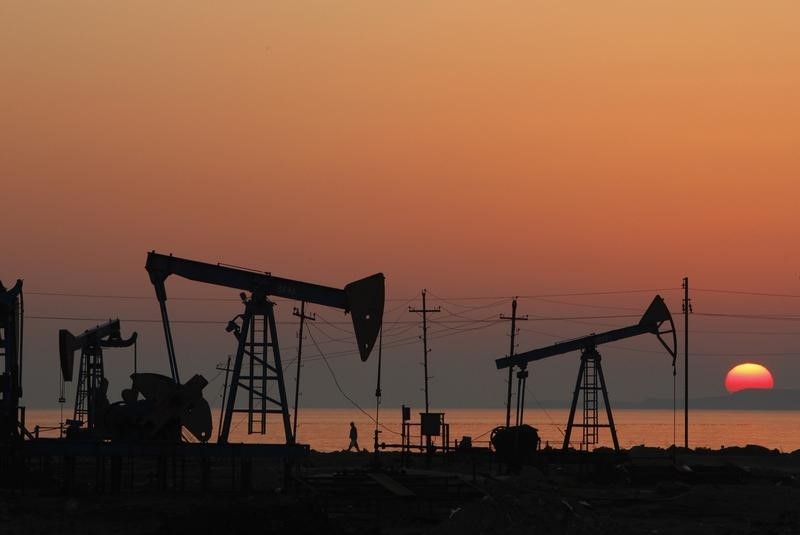Investing.com - Oil prices rose on Thursday morning in Asia, triggered by an expectation that the U.S. will re-impose sanctions against Iran.
Crude Oil WTI Futures for June delivery were trading at $68.38 a barrel in Asia at 11:10PM ET (03:10 GMT), up 0.48%. Brent crude futures for June delivery, traded in London, were up 0.53% at $74.38 per barrel.
Meanwhile, Shanghai crude oil futures for September delivery were up 0.27% at 444.40 yuan ($70.27) per barrel.
French President Emmanuel Macron said on Wednesday during a state visit to the U.S. that he expected Trump to pull out of a deal with Iran reached in 2015, in which Iran suspended its nuclear program in return for western powers lifting crippling sanctions.
The U.S. has until May 12 to decide whether it will leave the nuclear deal with Iran and impose new sanctions against Tehran, which would likely result in a reduction of its oil exports. As Iran is the third-largest producer in the Organization of the Petroleum Exporting Countries (OPEC), sanctions on the nation could tighten global oil supplies.
In addition to concerns surrounding Iran, declining output in Venezuela, OPEC’s biggest producer in Latin America, has also been pushing up oil prices.
Venezuela’s crude production has fallen from almost 2.5 million barrels per day (bpd) in early 2016 to around 1.5 million bpd due to political and economic turmoil.
Meanwhile, ongoing production cuts led by OPEC, which were introduced in 2017 with the aim of propping up the market, continue to support oil prices as well. There is some confidence that the pact will be extended beyond 2018.
However, rising production from the U.S. is still a key market theme that continues to weigh on oil prices.
U.S. crude oil inventories rose by 2.2 million barrels in the week to April 20, to 429.74 million barrels. That’s almost 10 million barrels above the five-year average.
U.S. crude oil production has jumped by more than a quarter since mid-2016 to over 10.59 million bpd, surpassing Saudi Arabia and closing in on Russia’s output of almost 11 million bpd.
A rising U.S. rig count also indicated further increases to come in the country’s crude output. The U.S. is expected to become the world’s largest producer by 2019.
